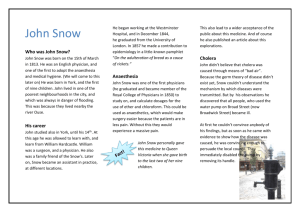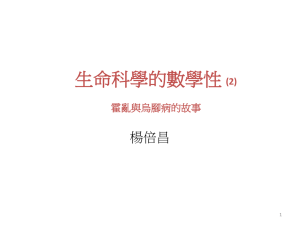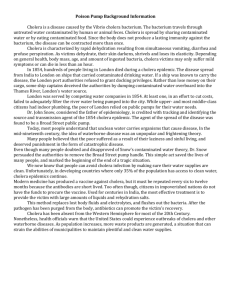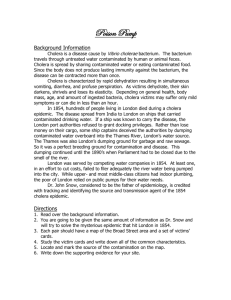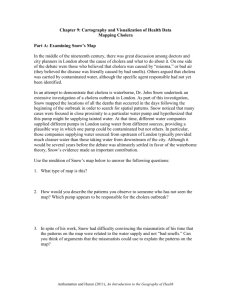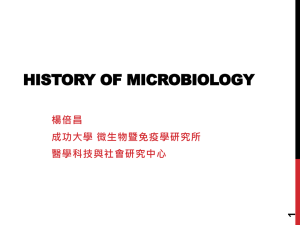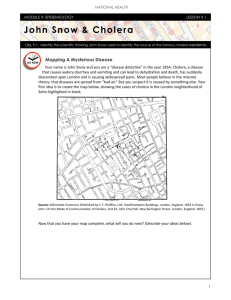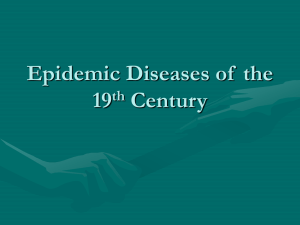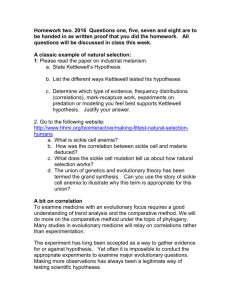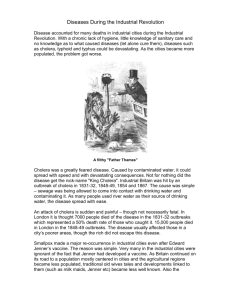1-Epidemiology
advertisement
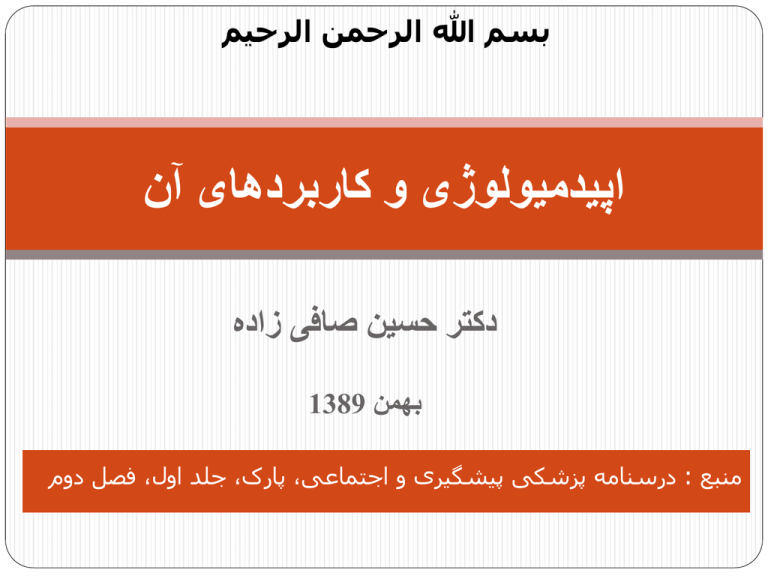
بسم هللا الرحمن الرحیم اپیدمیولوژی و کاربردهای آن دکتر حسین صافی زاده بهمن 1389 منبع :درسنامه پزشکی پیشگیری و اجتماعی ،پارک ،جلد اول ،فصل دوم اهداف درس انتظار می رود شما با مطالعه این درس: تاریخچه اپیدمیولوژی را توضیح دهید. اپیدمیولوژی را تعریف نمایید. اجزاء تعریف اپیدمیولوژی (فراوانی بیماری ،توزیع بیماری و عوامل تعیین کننده بیماری) را توضیح دهید. اهداف علم اپیدمیولوژی را بیان نمایید. کاربردهای علم اپیدمیولوژی را توضیح دهید. سئوال ؟ امروزه همواره در جوامع انسانی مسائلی رخ می دهند که با سالمت انسان سر و کار دارد و سئواالتی در زمینه های مختلف برای ما ایجاد می شود: چه هنگام اپیدمی بعدی آنفلوانزا مورد انتظار است؟ چرا امروزه بیماری های عروق قلب زیاد شده اند؟ چگونه به بهترین شکل می توان از سرطانه گردن رحم پیشگیری کرد؟ آیا واکسن های طراحی شده برای پیشگیری از سالک کارایی دارند؟ بعد از گذشت 30سال از پیدایش ایدز در دنیا وضعیت فعلی آن چگونه است؟ راه انتقال عمده آن در جوامع مختلف کدام است؟ چگونه می توان از اثربخشی یک داروی جدید در درمان دیابت مطمئن شد؟ افراد سالم چند بار باید چکاپ طبی شوند و این چکاپ ها باید شامل چه آزمایش ها و معایناتی باشند؟ Epidemiology Epi Demos Logus Historical Perspective Before 1850- Informal epidemiologic methods existed, but there was no separate discipline of epidemiology Hippocrates (about 400 B.C.E.) Association between external environment and personal characteristics and health Historical Perspective John Graunt (1662) Analyzed birth and deaths in london Excess of males born Infant mortality is very high Seasonal variation for mortality William Farr (1839) Examined mortality and occupation and marital status John Snow (1853) Cholera epidemic in london Cholera Epidemic: London 1840s Incidence of cholera was 86 per 10,000 households 1849 – Outbreak of cholera in London Snow investigates this outbreak and proposes link between the ‘cholera poison’ and exposure to contaminated water Unable to support his theory with evidence Prevailing belief that cholera was caused by bad vapors Cholera Epidemic : London 1854 Large epidemic of cholera SoHo and Golden Square district, on Broad Street, especially hard hit 500 deaths due to cholera during 10 day period in one summer. Many people left London John Snow investigated the outbreak John Snow (1813-1858) Snow’s Investigation Cholera was a well defined clinical entity characterized by voluminous diarrhea Recovery depended on the severity of disease Developed detailed maps and tables of the occurrence of cases John Snow Maps of Cholera in London, 1854 The Thames River and Sources of Water for London Lambeth Company Southwark And Vauxhall Company Snow’s hypothesis: water source determined risk for cholera Cholera in London by Water Company Water Supply No. Cholera Houses Deaths Southwark and Vauxhall 40,046 1,263 315 Lambeth 26,107 98 38 1,422 56 Other London 256,423 districts Deaths /10,000 Houses Snow’s Investigation Public Health Implications Pump handle removed from the Broad Street pump Number of cholera cases dropped dramatically Epidemiology Study of patterns of disease occurrence in human Populations. Observation of disease under natural conditions in Population as a whole rather than of individuals. Epidemiology Purpose : To study the characteristics of those people within a community (Population) who have a particular illness / condition / problem as compared to those without to try to understand : Probable cause Find a cure Prevent reoccurrence Prevention Epidemiology (Definition) Narrow : Study of distribution , frequency & determinants of diseases in human population Broad : Study of distribution , frequency & determinants of health-related states or events in specified populations and Application of this study to control of health problems Epidemiology (Definition) Narrow : Study of distribution , frequency & determinants of diseases in human population Broad : Study of distribution , frequency & determinants of health-related states or events in specified populations and Application of this study to control of health problems Epidemiology Components Frequency : Quantification of existence (prevalence) or occurrence (incidence) of Diseases; Disability & Death Measurements of health states & events in community Distribution : Who is getting the disease? Where? When? Determinants : Factors associated with health state; causal factors Epidemiology (Objectives) 1. 2. 3. 4. Identify etiology and risk factors Determine extent of disease Study natural history & prognosis Evaluate existing or new prevention or intervention strategies 5. Provide foundation for public policy decision Basic questions in Epidemiology 1. 2. 3. 4. 5. 6. 7. How much disease is out there? Who is getting the disease? Where is the disease occurring? When is the disease occurring? Why is the disease occurring? What is the course of disease? How can we prevent / treat the disease? خسته نباشید. گلهای آفتابگردان اثر :وینسنت ون گوک محل نگهداری :لندن ،گالری ملی1888 ،

